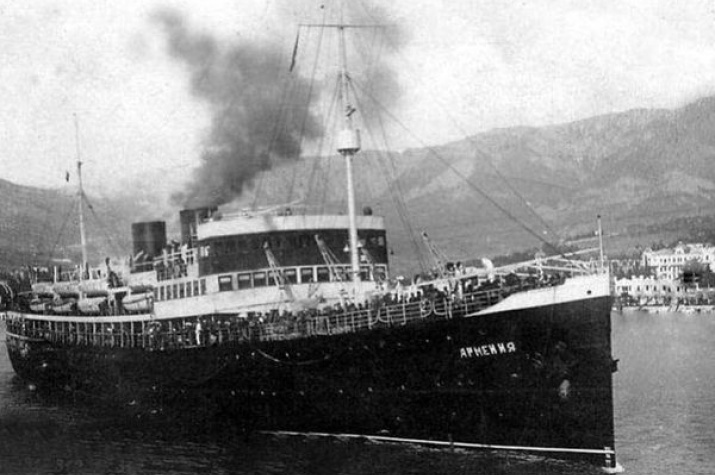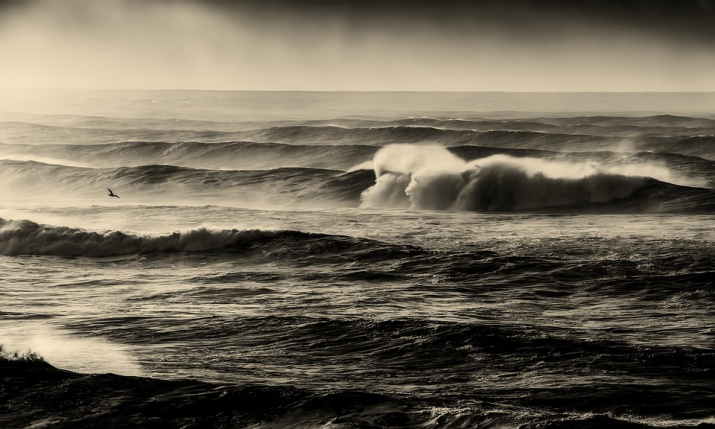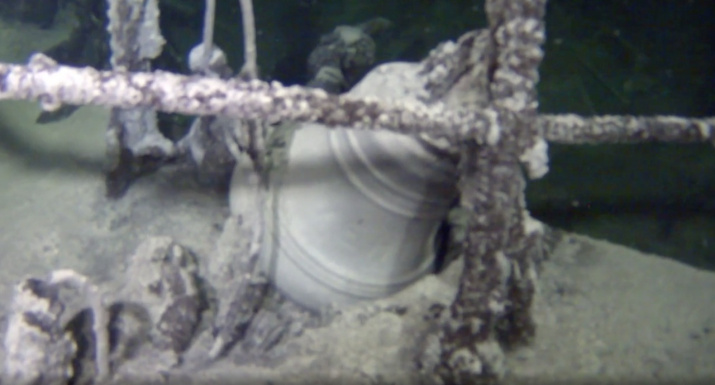The ship "Armenia", sunk by German aircrafts in 1941, was found at the bottom of the Black Sea. The wreck of the ship is considered one of the largest tragedies at sea in history: according to various estimates, there were from 6 to 10 thousand refugees and wounded on board. The search operation was carried out by the Russian Ministry of Defense. The research and identification of the vessel involved specialists from the Underwater Research Center of the RGS. Find out why it took so long to locate the sunken ship, and how it was found in our article.
The end of the search, the beginning of the study
15 nautical miles from Yalta, one and a half kilometers down - the ship "Armenia" is resting here. In order to find it, the search teams were combing through the Black Sea for years. Over the past 20 years alone, more than 300 square kilometers have been explored. One of the operations even involved the famous American oceanographer Robert Ballard, who discovered the “Titanic” in 1985, and in 1989 the wreckage of the German battleship "Bismarck". Expensive equipment did not help him: “Armenia” did not show itself.
Such "elusiveness" of the ship gave rise to a number of conspiracy theories. It was said that “Armenia” was returning to Sevastopol, that there were not people on board, but a valuable cargo, that it was going another way and to another destination. Otherwise, why is there nothing in the known coordinates?
In 2017, during a search operation conducted by the Russian Ministry of Defense, a magnetometer detected a magnetic anomaly at the bottom of the sea. From this data it was impossible to understand what kind of object was at the bottom, nor the exact coordinates. But the search area had narrowed - the magnetometer data pointed to a square that needed to be studied more carefully.
In March 2020, during the next search operation, the area was thoroughly investigated with a sonar. And this time the study showed that at the bottom, indeed, there was an object with outlines resembling “Armenia”. However, there was no absolute certainty. Since the beginning of the 2000s, the sunken ship had been "found" four times, but in the end this information did not get confirmed. To identify the found vessel, the specialists from the Underwater Research Center of the Russian Geographical Society were invited.
“Only visual contact could confirm this,” said the expedition participant, executive director of the Underwater Research Center of the Russian Geographical Society, Sergey Fokin. “You cannot blindly trust the sonar: the human psyche is designed for frequent wishful thinking, especially when it takes so many people so long to find an object."This is definitely "Armenia"!
In April 2020, the specialists of the Underwater Research Center of the RGS arrived at the ship’s location. A remotely operated underwater vehicle (ROV) made in Russia of the “РТ” (eng. “RT”) series descended to the bottom. It made the first underwater shots. The device photographs dents and cracks. In the control cabin, the entire dive process can be observed live.
Inspection of the found hull begins from the central part of the portside moving towards the stern. Even at the first approach to the vessel, fragments of the deck and other elements are found at the bottom. When inspecting the side itself, the characteristic signs of the "Armenia" ship are noted: the location of decks and peculiar openings in the guard rail.
“Preparing for the expedition, we studied a huge amount of archival materials,” says Sergey Fokin. “It was necessary to identify the characteristic features of this vessel. We did not know what condition it was in, what position it was in, how much it was destroyed by the bombs, and we had to be ready for everything. "Another descent of the underwater vehicle. The robot inspects the bow of the ship, where once there was a name. It is not damaged so much, and the name could have been preserved. But, no: it had probably been painted on, and aggressive sea water quickly corroded the paint. Although, even without a name, there are more than enough signs to confirm that it is indeed “Armenia”. The robot moves on. And suddenly, the luckiest find: there is the stand of the ship's bell at the stern, and it itself is on the deck! The bell fell the inscription up, and it clearly reads "Armenia". The bell is made of non-ferrous metal and has not corroded. The expedition members did not even count on such luck. “We left no room for imagination to any false historians. Such finds are like a passport,” said expedition member, executive director of the Underwater Research Center of the Russian Geographical Society, Sergey Fokin.
Another dive. The device shows the starboard and stern of the vessel. Here, the robot discovers another characteristic sign - a fragment of the backup steering wheel. What it looked like can be understood from the shots of the feature film “Treasures of a Dead Ship” (directed by Vladimir Braun and Isaac Menaker, “Lenfilm” production company, 1935), in which the “Armenia” ship starred as itself.The final dive. The robot returns to the portside, but now to the area of the bridge, where the air bombs mainly hit. It was here that the guns could have been located if they had, in fact, been installed in violation of the convention on sanitary ships. But, alas, it will not be possible to find out whether they were there or not. The degree of destruction of the vessel is such that even the number of explosions that destroyed "Armenia" cannot be determined.
Continuous inspection of the hull by an underwater robot lasts six hours, it descends to the object seven times.According to the expedition, the survey of the vessel "Armenia", an object at a great depth, required a lot of concentration and accuracy.
“We needed to gather the maximum amount of data, without unnecessarily risking the equipment,” says Sergey Fokin, executive director of the RGS Underwater Research Center. “A bombed vessel at the bottom is a pile of metal parts, structures, rails, davits, hanging ropes, cords, fastenings, rickety masts. This is a dense forest in which you can get either the robot or its cable – through which power is supplied, and data and pictures are sent back – tangled."
One study was enough to make important conclusions: the object did not split into pieces; it stands in one piece on an even keel with course of 220. The hull is covered with a layer of silt, but does not have obvious holes, which eliminates the possibility of sinking from hitting torpedoes, as reported by the official version.
"The superstructures and decks have terrifying traces of destruction - the railings and other vertical elements are pointing outwards. Most likely, these are the consequences of explosions of the aerial bombs. The main damage occurred in the middle and bow part of the superstructure closer to the portside, which may indicate aerial bombing along the vessel’s course, that is, German planes attacked from the stern," said Sergey Fokin.
The version of rapid sinking to the bottom was also confirmed: some of the windows are not broken, but are pressed inward entirely. This means that by the time the hull went to great depths, "air pockets" still remained inside the vessel.And yet, why couldn't the “Armenia” be found for so long?
“The quality of equipment and luck play an important role in the search work. The Defense Ministry experts found the “Armenia" hospital ship in the coordinates as close as possible to those published in official reports,” says the executive director of the RGS Underwater Research Center. “The main difficulty in finding the “Armenia” is that the ship rests at a depth of one and a half kilometers. You can be nearby, literally a hundred meters away, but never find it."
Members of the expedition say that no new dives to "Armenia" are expected. And the matter is not only in the extreme depth. “This is not just a historical site, but a resting place for seven thousand people. It is absolutely unethical to dig through it just because we are interested” says Sergey Fokin. “I want to believe that a depth of 1,500 meters will help to reliably keep the dead from illegal encroachments of sensation lovers and treasure seekers."
Natalya Mozilova








